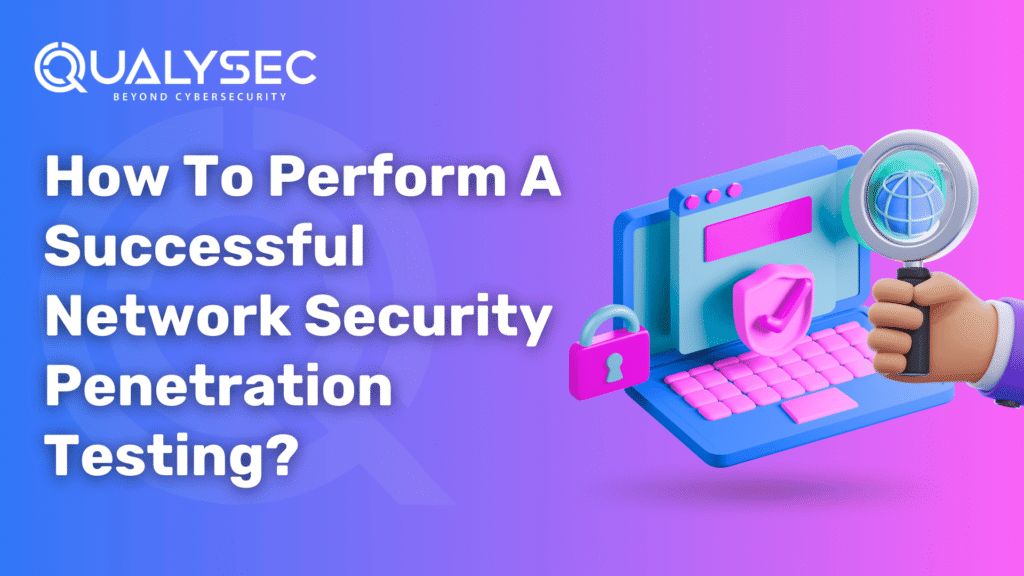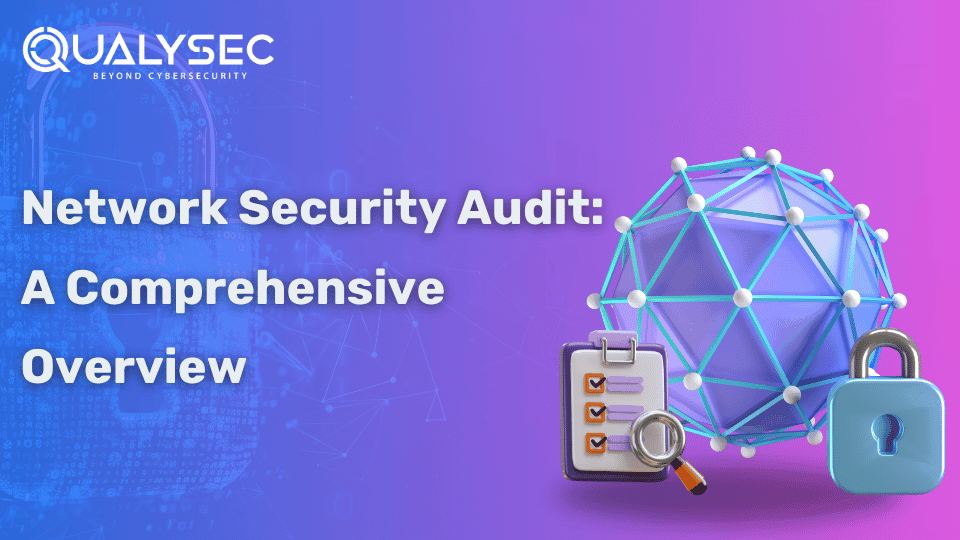How To Perform a Successful Network Security Penetration Testing?
Ensuring the protection and reliability of a company’s IT infrastructure relies heavily on doing Network Security Penetration Testing. This system relies on using real attack scenarios to find and resolve any dangers to your network. When penetration testers check network elements, functions, and security measurements, they identify areas for organizations to improve and ensure they meet regulations. A successful penetration test can significantly enhance your organization’s security posture, reducing the risk of data breaches and other security incidents. Qualysec Technologies has a proven set of actions for performing Network Penetration Testing, covering the first steps, reconnaissance, exploitation, creating reports, and solving issues. Anyone can use these guidelines – from small business owners to large company managers – to keep their network safe. Define Scope and Objectives Starting Network Security Testing begins with defining the scope and setting the main objectives. This crucial step ensures that the testing remains focused, operates effectively, and delivers value for the business. Key Actions – Gather Information After setting the scope, the next step is reconnaissance. This phase, which involves gathering as much information as possible about the target network without making any changes, is a thorough and comprehensive process. Key Actions – Network Scanning and Enumeration When equipped with the correct data, start the steps of scanning and enumeration. You need to use this stage to learn about active hosts on the network, the open ports they offer, and any running services. Key Actions – Identify Security Weaknesses Following the network and service mapping, you should discover potential risks hackers can exploit. Key Actions – Attempt Exploitation (Controlled Testing) Now, the team tries to verify the issues by performing practices similar to what attacks could look like. Experts try to determine if the discovered problems can lead to gaining unauthorized access or increasing one’s privileges. Key Actions – Post-Exploitation and Persistence Testing After getting access or elevating privileges, the next thing to do is find out what an attacker could do on the network. Key Actions – Talk to our Cybersecurity Expert to discuss your specific needs and how we can help your business. Schedule a Call Reporting and Documentation It is only through comprehensive documentation that a Network Security Penetration Testing engagement holds real value. By presenting clear, practical reports, stakeholders can better decide which remediation to take first. Key Actions – Executive Summary – Explain things at a high level for stakeholders not involved in the technical side. Detailed Findings – List the identified issues, their risk level, available evidence, and how they could affect the business. Proof of Concept – Show evidence that backs up your observations, such as screenshots or logs. Remediation Recommendations – List realistic and ordered tips to deal with each issue. Methodology – Write down all the tools, methods, and tasks used as part of testing. Tip – Try to use words that everyone will understand without confusion. The report should be clear for those with technical backgrounds and those without one. Remediation and Retesting Identifying problems is still only one part of what needs to be done. After that, you should work with stakeholders to address the issues discovered and check that the solutions are working correctly. Key Actions – During the remediation and retesting phase, it’s important to collaborate with IT and security teams to implement the recommended changes. This collaborative approach ensures that the solutions are effective and the network is secure. Patch and Update – Install patches, review settings, and improve how access controls are set up. Retest – Test issues that have been pointed out before to make sure they have been resolved. Continuous Improvement – Use the experience from going through the attack to improve security policies and testing for the future. Tip – Retesting is crucial. It guarantees that the original problems have been solved and no new ones have been added. Continuous Monitoring and Ongoing Assessment It is important to run Network Security Penetration Testing regularly. Networks are always changing, as are the risks they face. Key Actions – Schedule Regular Tests – Regularly arrange for network security and penetration testing to keep your security up to date. Integrate with SOC – Send security findings to your SOC so they can be continually followed up on. Threat Intelligence – Keep up with new threats and update how you handle testing. Security Awareness – Teach staff how to identify and deal with new threats to the network. Tip – Conduct penetration testing, vulnerability scanning, and red teaming to improve your security approach. How Qualysec Technologies Can Help in Network Security Penetration Testing Many organizations depend on Qualysec Technologies for reliable Network Security Penetration Testing. With industry-leading techniques, high-quality tools, and advocacy for clients, Qualysec performs in-depth reviews that spot and help solve existing security problems. 1. Structured and Proven Testing Methodology The company follows a set method of testing security that takes care of every step, from finding the scope and collecting data to testing attacks and advising on fixing problems. To ensure your network security testing is checked correctly, Qualysec simulates actual attacks to test how your security controls behave. 2. Comprehensive Coverage and Deep Expertise Tests at all levels are performed, making sure that problems overlooked by scanners are detected by manual checking. Among the networks checked are external and internal, cloud infrastructure, APIs, IoT devices, and more, for a view of your network defense. Adhering to OWASP and NIST tools and standards, certified professionals and researchers in security work to protect your system and keep it up to date. 3. Tailored Engagements and Clear Scoping Together with clients, Qualysec establishes what is essential and needed for each project. As a team, you can test in ways that matter, are well-aligned, and support what your organization aims for. 4. Detailed, Actionable Reporting After completing tests, Qualysec sends detailed reports about the test results, threats faced, and suggested actions to solve the problem. The team can easily understand and manage problems thanks to reports that are easy for






